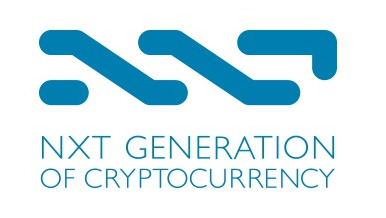
In my last article I gave a brief primer on Nxt and mentioned how it used a proof-of-stake consensus mechanism. So what is proof-of-stake and what are the pros and cons?
Let’s start by discussing bitcoin and proof of work and then comparing to Nxt and proof of stake.

Bitcoin and proof of work
Mining is the process of inserting blocks in the blockchain. It is through mining that transactions are validated and a distributed consensus is reached. The blockchain is the genius behind bitcoin and cryptocurrencies. With transactions being validated through computers the need for a trusted third party (like the government… cough cough) is eliminated.
For a miner to enter his block of transactions into the blockchain he will have to provide an answer, or a proof, to a specific challenge. This proof is difficult to produce but easily validate. This is called proof of work.
A good analogy is a lock and its combination. It takes a lot of work to figure out the combination, but once you do it’s easy to verify.
Bitcoin uses proof of work. Mining is done by solving a complex mathematical problem. The miner that solves the problem adds the block to the blockchain and is rewarded bitcoin.
The downside is that proof of work requires a lot of computing power and therefore wastes energy. It’s also time consuming.
There’s also the issue of when newly mined coins run out. After that miners will only earn transaction fees. This may cause a drop in the number of miners and the network would be more susceptible to attacks.

Nxt and proof of stake
Nxt uses proof of stake. Proof of stake requires ownership of the cryptocurrency. So the more cryptocurrency you own the more mining power you have. This provides three benefits: it eliminates the need for expensive mining rigs, it runs on exponentially less power, and it forces miners to have a stake in the network.
It’s a concept originally pioneered by Peercoin but Nxt was the first cryptocurrency that was 100% proof of stake.
With Nxt mining is called ‘forging.’ The currency is secured by owners of already existing coins that receive a portion of transaction fees for forging a Nxt block. Nxt uses randomization to predict the next generator. And since stakes are public it can be predicted with reasonable accuracy which account will win the right to forge the next block. While block authors are chosen at random, the greater the stake you have the increased likelihood of adding a block to the chain.
Nxt uses a process called Transparent Forging. The network can detect which accounts are not participating in proof of stake and also recognizes users forging a fraudulent block. Attackers’ mining power can be decreased to zero and this helps keep the Nxt network secure.
Now, with Nxt all the coins (1 billion) have already been produced. So new coins are generated from mining. Nxt miners, however, do earn Nxt fees for forging a new block.
For an advanced discussion check out this article by Vitalik Buterin on the subject. Ethereum, by the way, is planning to switch from proof of work to proof of stake at some point.
Ok, that’s it for now… but I’ll be following up with articles on how to mine Nxt, the features of Nxt and the upcoming ICO of Ardor.
How to Get Nxt
You’ll want to start by getting yourself some bitcoin. I use Coinbase
Then you’ll need a Nxt wallet. You can get one at MyNXT.info
One way to purchase Nxt is through a cryptocurrency exchange such as Poloniex. You transfer bitcoin to Poloniex and then buy Nxt on the exchange. For safety keep the Nxt in your Nxt wallet.
The other option is to use ShapeShift. It’s a way to exchange cryptocurrencies without signing up for an exchange.
#cryptocurrency #Nxt #blockchain #crypto-news #money
